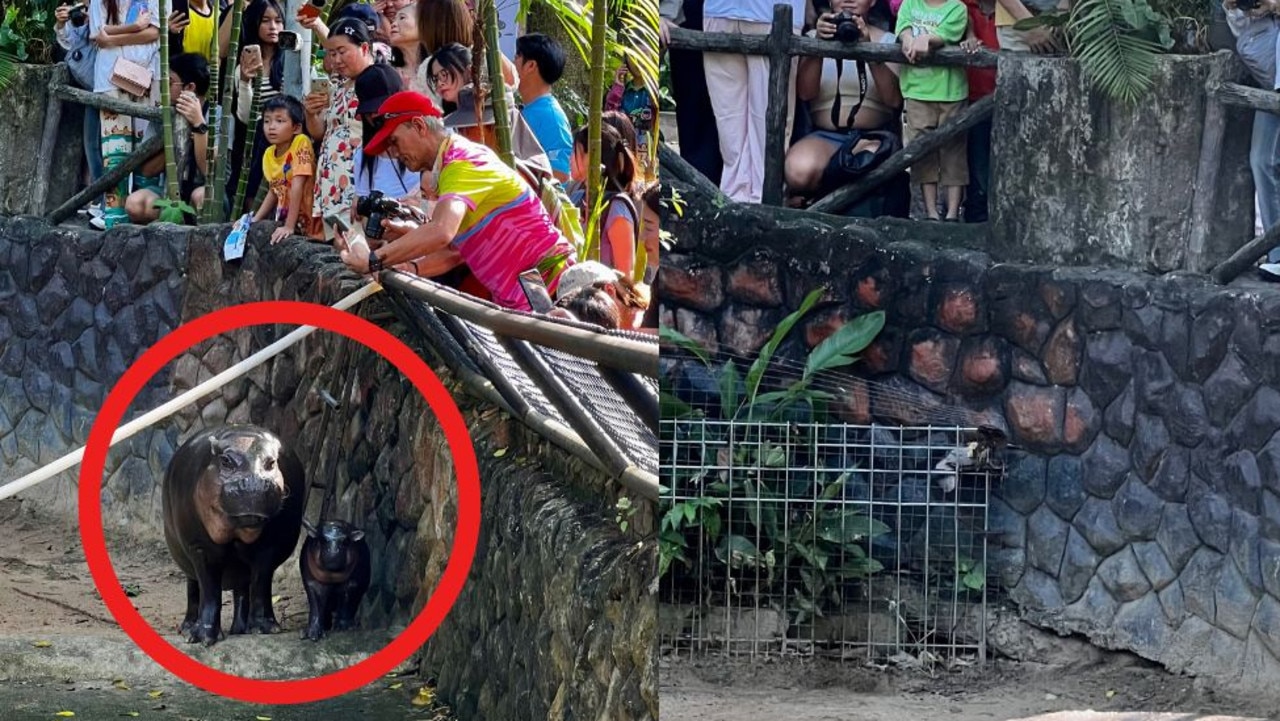Dish I didn’t expect to see at one of Hong Kong’s most famous yum cha restaurants
I’m dining at one of the most famous restaurants in a global food capital and I can’t believe what’s just arrived at the table.
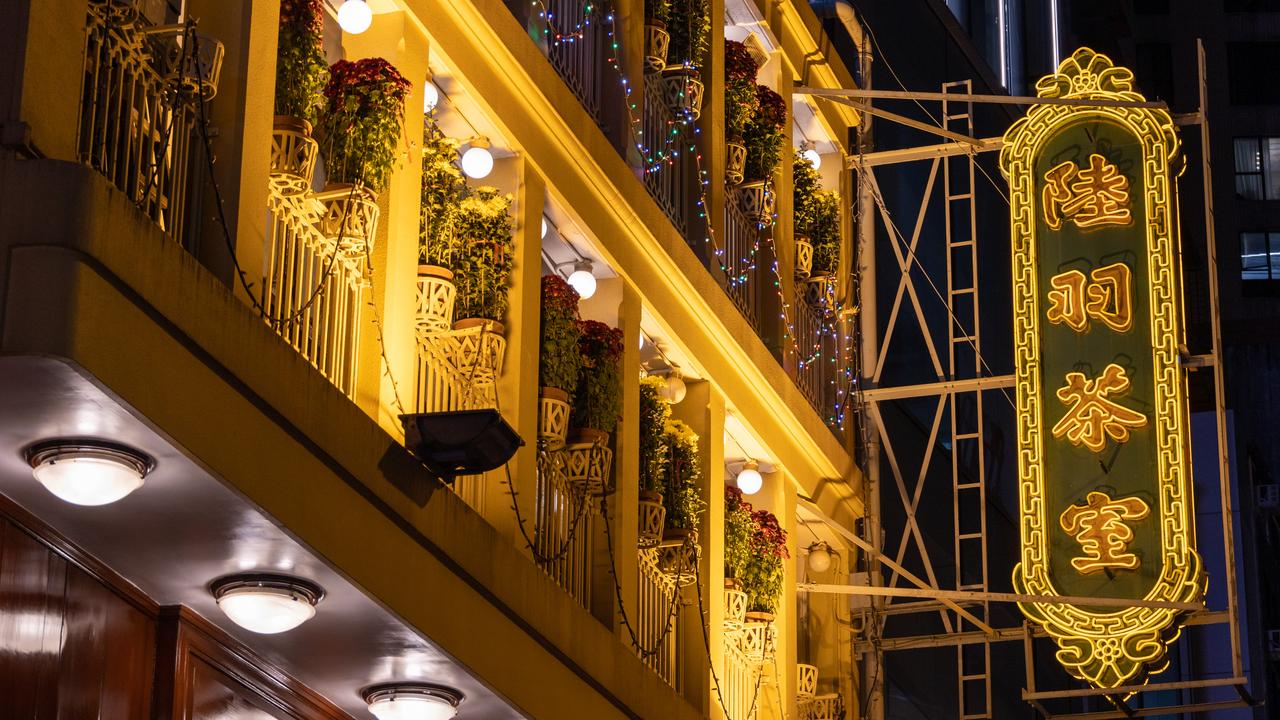
Plate after plate of local delicacies are flying out of the kitchen faster than we can keep up with them.
We’re crammed shoulder-to-shoulder around a huge table at Luk Yu Tea House, one of Hong Kong’s oldest and most famous yum cha restaurants. Australian chef and restaurateur Neil Perry, who’s been here many times, has taken charge of ordering.
Braised duck. Shrimp dumplings. Steamed mince balls. Stir-fried cabbage. More dumplings. Egg tarts. Fried rice served in a cabbage leaf.
The lazy Susan spins this way and that as arms crisscross the table, greedy chopsticks snapping up delicious morsels. This is Cantonese dining, much like the city of Hong Kong itself: fast, dynamic, exciting.
More baskets pile up, steam billowing as lids are lifted. Fried spring rolls. Steamed spring rolls. Fluffy buns.

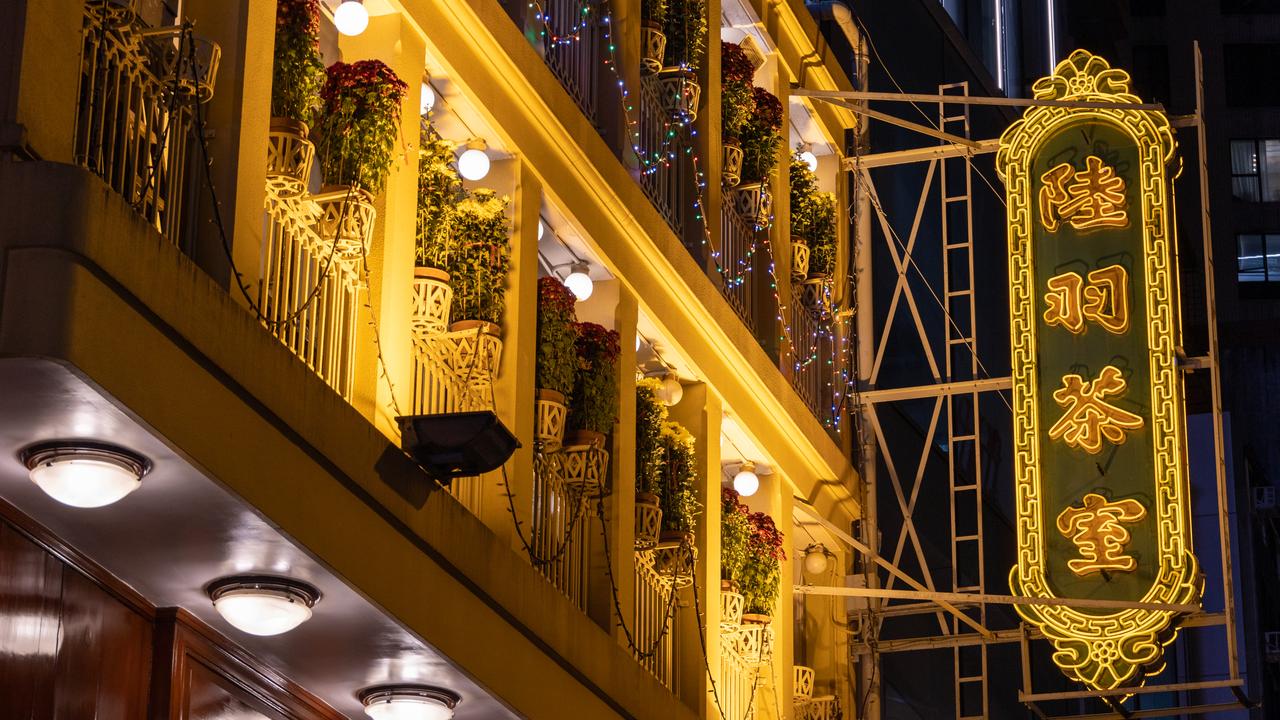
“What’s this one?” someone asks as they grab a mystery dumpling. “Dunno but it’s so good,” someone garbles back through a mouthful.
Then a dish arrives that’s so familiar it stops a few of us in our tracks. With its neon-coloured capsicum and nuggets of pineapple, it is unmistakeable: sweet and sour pork, that stalwart of every menu at every Chinese restaurant in every town and city in Australia you can think of.
I admit to Perry my surprise, assuming sweet and sour pork was one of those Anglo-Chinese creations, like lemon chicken or Mongolian lamb, that were invented for western palettes and bore little resemblance to what Chinese people actually ate.
“Oh, no,” he says. “But the Australian version is very saucy. The way the Chinese do it, the pork should be just coated in the sauce, not sitting in a pool of it all over the plate.”
With the sauce more deeply caramelised and less candy-sweet, it is even better in Hong Kong, I decide. Most food is.
Neil Perry knows more than a thing or two about Hong Kong cuisine: he’s evangelical about it. He first visited in 1990 and instantly adored it, returning at least once every year. But his annual pilgrimages came to a halt a few years ago — a turbulent few years for Hong Kong, not least because of a snowballing Covid-19 crisis that kept the region off-limits for longer than most.
Hong Kong reopened to international travellers earlier this year (there are no restrictions upon arrival) and Qantas is now flying to Hong Kong from Sydney and Melbourne.
Back for the first time since 2017 for the launch of Qantas’ revamped and reopened Hong Kong International Lounge, Perry — the airline’s creative director of food, beverage and service — found the city he loved so much was as brilliant and exciting as he’d left it.
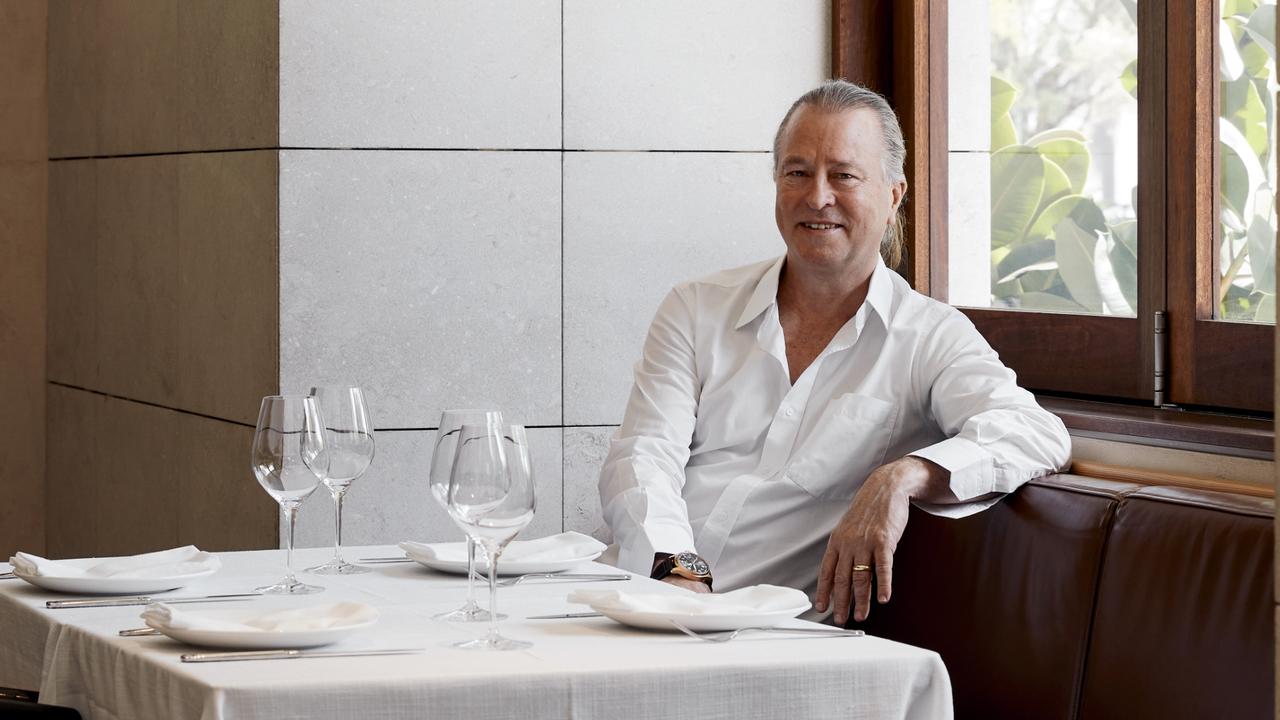
Grocery shopping, Hong Kong style
Earlier that day, Perry had taken us on a walk through the Wan Chai wet market, a bustling hub of vendors selling live seafood, dried seafood, fresh cut meats, fruits, vegetables and pantry items — the nuts and bolts of what makes Hong Kong one of the world’s top food destinations.
“This is how it should be,” Perry calls over the hubbub as locals zip around us, doing their daily food shop. He recalls childhood memories of his parents taking him to the old food markets at Haymarket in Sydney, which are now long gone.
“At home we go to supermarkets, buy too much food, stick it in the fridge and waste it,” he says. “I really love this model of daily shopping for daily cooking. It’s all so fresh.”
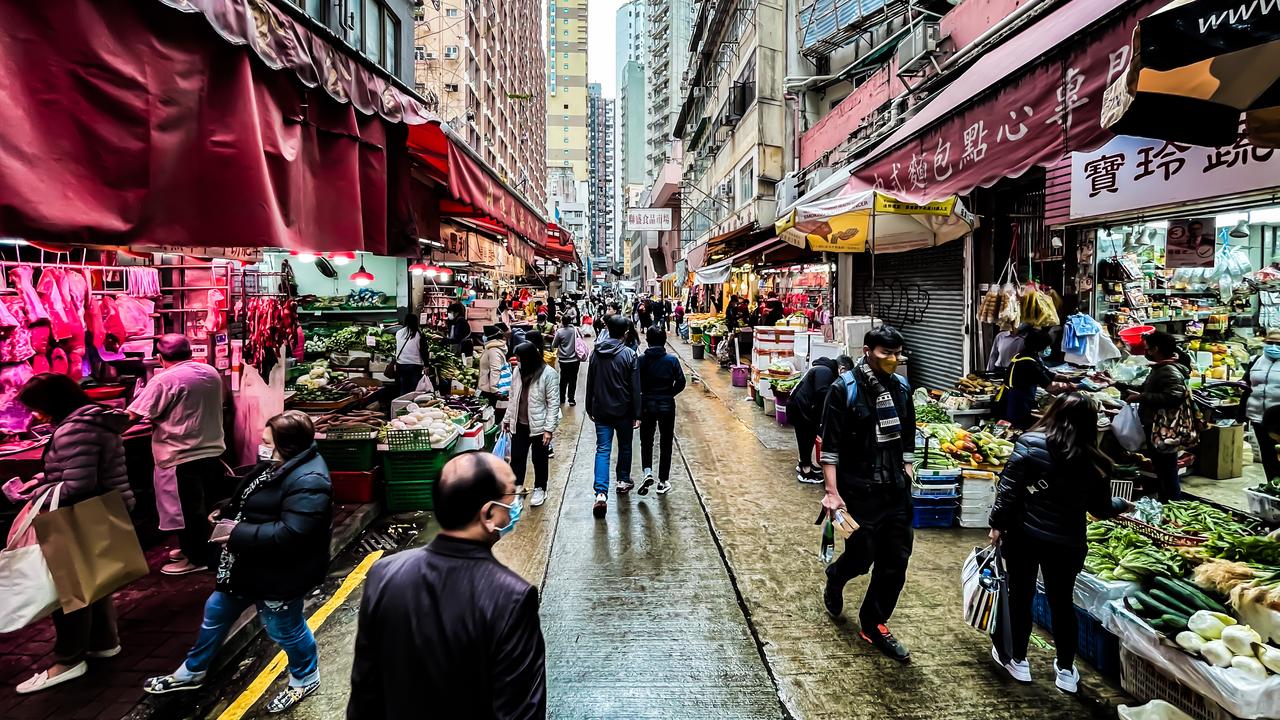
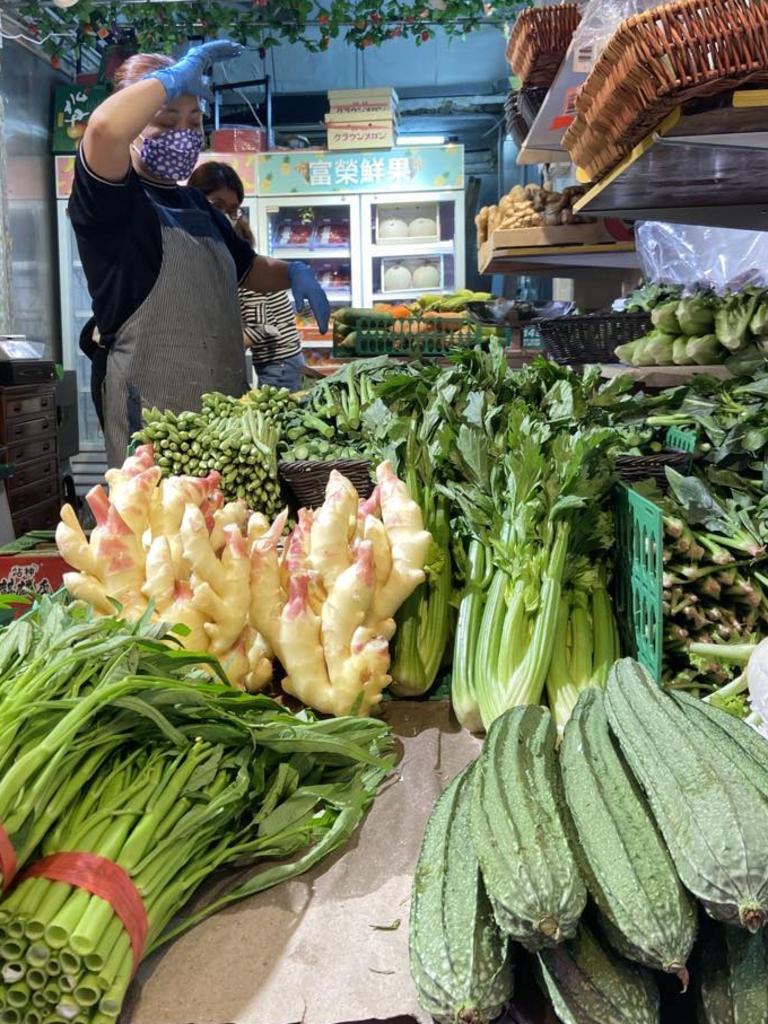

Outside a fruit and vegetable shop, Perry points out some of his favourites – wombok hearts, gai lan, bok choy, pak choy, water spinach, fresh bamboo, elegant bunches of chives.
“I love Chinese chives, they’ve got a beautiful hint of garlic,” he says.
Another shop specialises in dried ingredients, like dried abalone, dried shrimp, bird’s nest and fish maw, all typically used by Chinese cooks to add texture to dishes.
Seafood purveyors spruik a variety of fresh catches, some still thrashing about in buckets. Perry’s a fan of a cigar-shaped mollusc known as a bamboo clam, also known as a razor clam, which we can’t get in Australia.
“With just ginger and shallots or something very simple, they’re incredible,” he says. “They’ve got an amazing nutty flavour and they’re also awesome raw, or with some extra virgin olive oil or lime and a bit of spring onion.”
There are plenty of intriguing products here that we can’t get at home, like ginkgo nuts and fresh straw mushrooms. Fresh bamboo is hard to find in Australia and garlic stems are too difficult for us to grow.
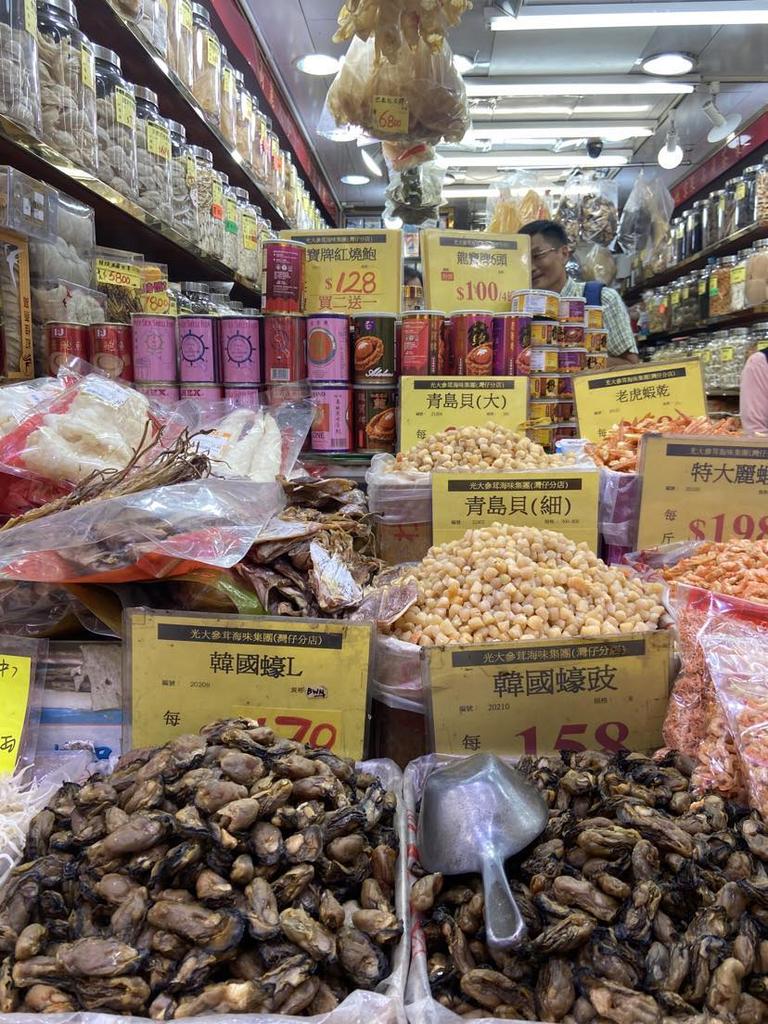

When he’s in Hong Kong, Perry is something of a culinary explorer, mining the city for interesting flavours, ingredients and techniques to inspire the menus of his restaurants back home. Spice Temple in Sydney and Melbourne represent his love for Chinese cuisine, and he’s just started serving mud crabs at Margaret in Sydney’s Double Bay. Next year he will open a new restaurant in Sydney, promising lots of large tables with lazy Susans to be laden with bountiful, family-style banquets.
“It’s a real nod to the beautiful Cantonese restaurants I’ve been to in Hong Kong, which are all about family dining,” he says.
‘I didn’t know if it would feel like that’
Two absolute icons of Cantonese-Hong Kong food — yum cha and char sui pork — are also two of Perry’s signature dishes at Qantas’s Hong Kong International Lounge.
After being shuttered during the pandemic, the lounge at Hong Kong International Airport officially reopened with a sleek, refreshed look in May.
Though it’s the last of Qantas’ international lounges to make its post-Covid comeback, it’s long been a favourite in the global network.
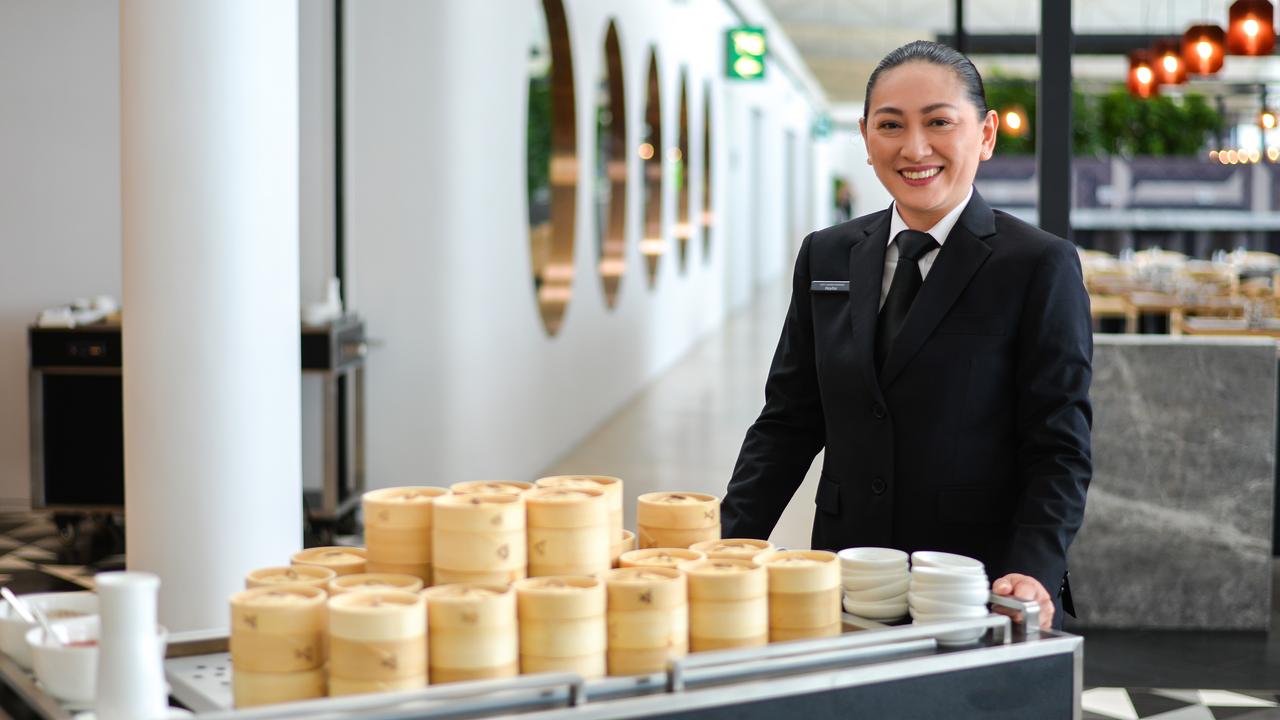
Qantas flies daily between Sydney and Hong Kong, and has just resumed flights from Melbourne after a three year pause. The Melbourne-Hong Kong flights will initially take off three times per week, increasing to four by mid-July, and then daily from October.
Qantas chief customer officer Markus Svensson said the airline hoped to soon return to pre-Covid capacity with Hong Kong, an important destination for business travellers and holiday-makers, and a key transit hub.
“(Hong Kong) was one of our most popular destinations pre-Covid,” he said. “We’ve been back since late January when we started the Sydney flights, and demand has been amazing and very strong.
“We are coming back, it’s taken a little longer than we’d like it to, but having this lounge is fantastic.”
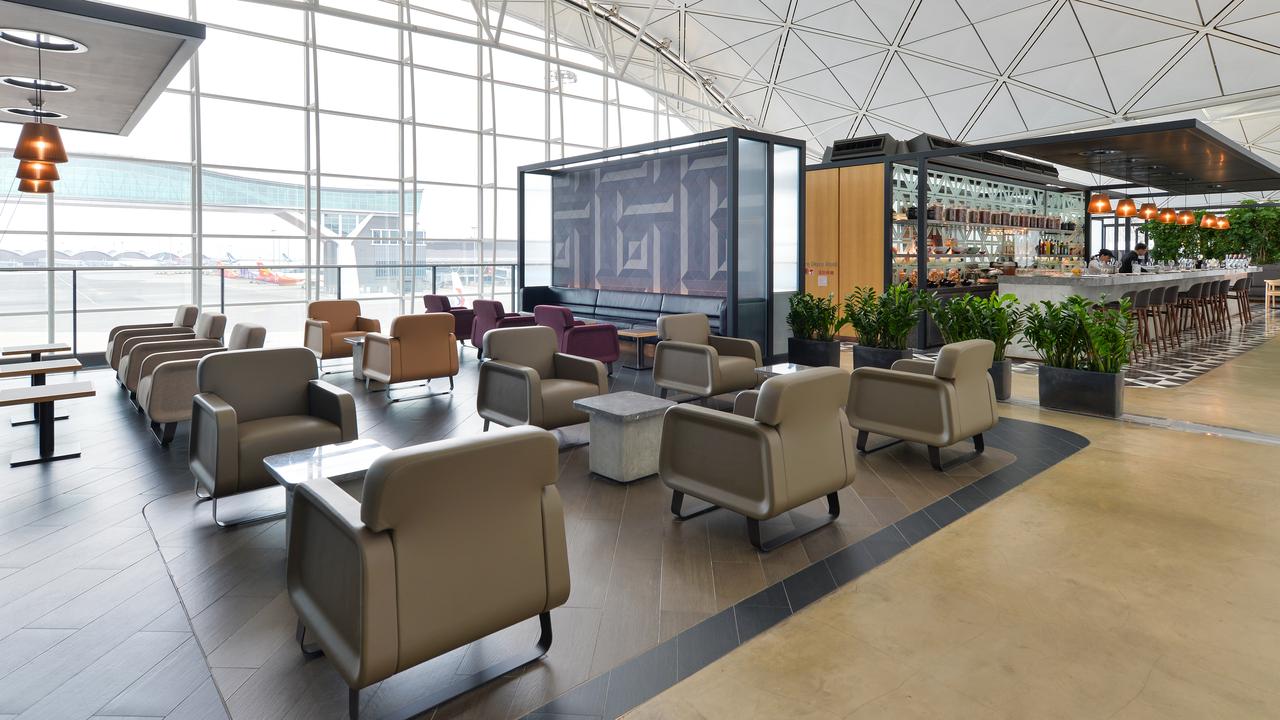
Occupying 2000sq m, the lounge has updated decor and furnishings across different zones — formal dining area, comfy lounge areas, a business area for catching up on work, the all-important bar — all with panoramic views of Hong Kong’s famous Sky Bridge.
It has high-speed Wi-Fi, plenty of power and data outlets for all, 12 luxurious shower suites, a “rehydration station” of refreshing drinks, and lots of lovely snacks to help yourself to while awaiting your flight.
But the real excitement has been the return of the Hong Kong lounge’s much-loved yum cha trolley, offering a delicious array of dumplings, and Perry’s take on char sui pork, the Chinese barbecue pork dish he serves with rice and zingy pickles.
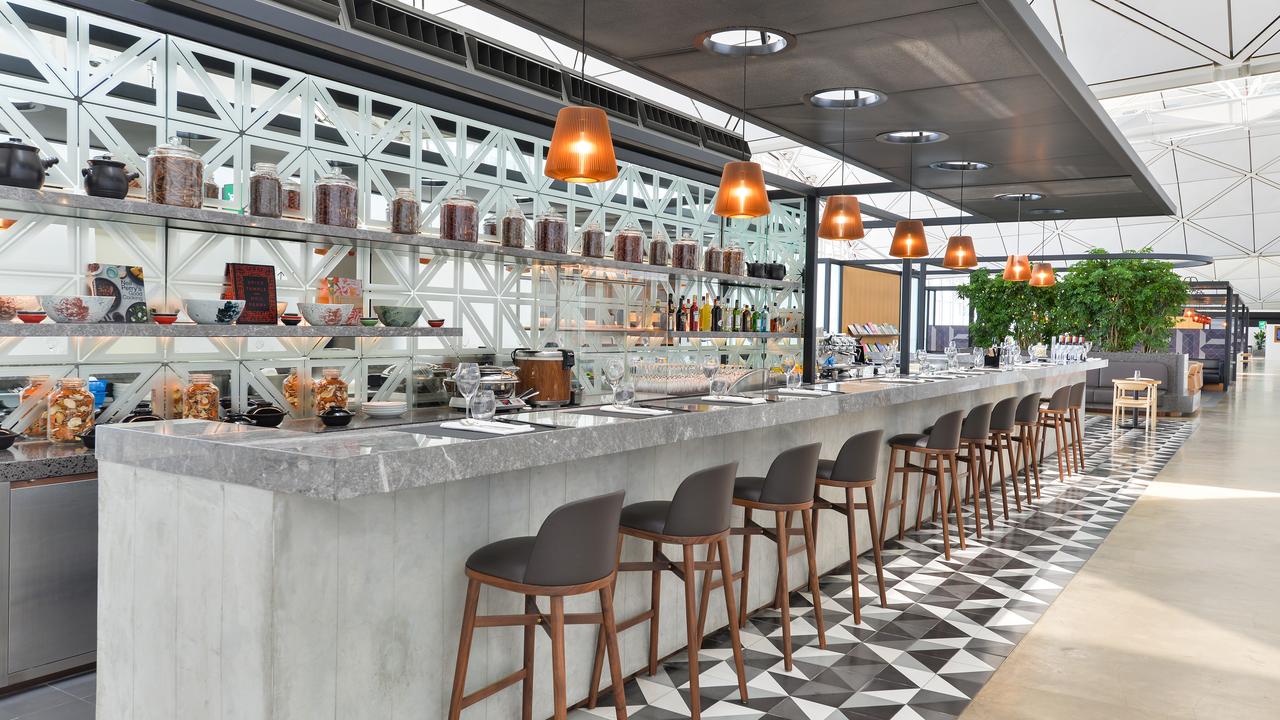
“In this lounge we reflect the multicultural nature of Hong Kong and the world because you cannot only get the best Chinese food here, but also French, Italian, Japanese,” Perry said at the launch.
“It’s a city that has always thrilled me, it’s a city I have always loved being in, it’s a city that’s always meant food and excitement to me, and to be back this week, it’s like nothing had ever changed.
“I didn’t know if it was going to feel like that but I promise you, Hong Kong feels alive, it feels amazing. The food, the vibrancy; everything is extraordinary about it.”
The writer travelled to Hong Kong as a guest of Qantas and the Hong Kong Tourism Board





